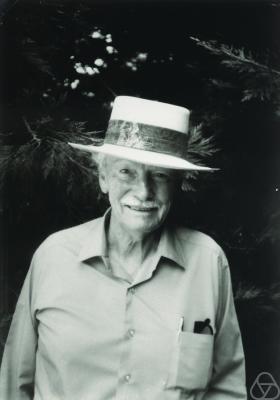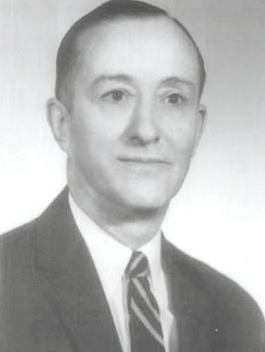Calculus is the mathematical study of continuous change, in the same way that geometry is the study of shape, and algebra is the study of generalizations of arithmetic operations.

The history of mathematics deals with the origin of discoveries in mathematics and the mathematical methods and notation of the past. Before the modern age and the worldwide spread of knowledge, written examples of new mathematical developments have come to light only in a few locales. From 3000 BC the Mesopotamian states of Sumer, Akkad and Assyria, followed closely by Ancient Egypt and the Levantine state of Ebla began using arithmetic, algebra and geometry for purposes of taxation, commerce, trade and also in the field of astronomy to record time and formulate calendars.
Mathematical notation consists of using symbols for representing operations, unspecified numbers, relations, and any other mathematical objects and assembling them into expressions and formulas. Mathematical notation is widely used in mathematics, science, and engineering for representing complex concepts and properties in a concise, unambiguous, and accurate way.

Michael David Spivak was an American mathematician specializing in differential geometry, an expositor of mathematics, and the founder of Publish-or-Perish Press. Spivak was the author of the five-volume A Comprehensive Introduction to Differential Geometry, which won the Leroy P. Steele Prize for expository writing in 1985.

In calculus, Leibniz's notation, named in honor of the 17th-century German philosopher and mathematician Gottfried Wilhelm Leibniz, uses the symbols dx and dy to represent infinitely small increments of x and y, respectively, just as Δx and Δy represent finite increments of x and y, respectively.

Bhāskara II, also known as Bhāskarāchārya, was an Indian polymath, mathematician, astronomer and engineer. From verses in his main work, Siddhāṁta Śiromaṇī, it can be inferred that he was born in 1114 in Vijjadavida (Vijjalavida) and living in the Satpuda mountain ranges of Western Ghats, believed to be the town of Patana in Chalisgaon, located in present-day Khandesh region of Maharashtra by scholars. In a temple in Maharashtra, an inscription supposedly created by his grandson Changadeva, lists Bhaskaracharya's ancestral lineage for several generations before him as well as two generations after him. Henry Colebrooke who was the first European to translate (1817) Bhaskaracharya II's mathematical classics refers to the family as Maharashtrian Brahmins residing on the banks of the Godavari.

Ivan Morton Niven was a Canadian-American number theorist best remembered for his work on Waring's problem. He worked for many years as a professor at the University of Oregon, and was president of the Mathematical Association of America. He wrote several books on mathematics.

A coincidence is a remarkable concurrence of events or circumstances that have no apparent causal connection with one another. The perception of remarkable coincidences may lead to supernatural, occult, or paranormal claims, or it may lead to belief in fatalism, which is a doctrine that events will happen in the exact manner of a predetermined plan. In general, the perception of coincidence, for lack of more sophisticated explanations, can serve as a link to folk psychology and philosophy.

Ivor Owen Grattan-Guinness was a historian of mathematics and logic.

Andreas Floer was a German mathematician who made seminal contributions to symplectic topology, and mathematical physics, in particular the invention of Floer homology. Floer's first pivotal contribution was a solution of a special case of Arnold's conjecture on fixed points of a symplectomorphism. Because of his work on Arnold's conjecture and his development of instanton homology, he achieved wide recognition and was invited as a plenary speaker for the International Congress of Mathematicians held in Kyoto in August 1990. He received a Sloan Fellowship in 1989.

Phillip Augustus Griffiths IV is an American mathematician, known for his work in the field of geometry, and in particular for the complex manifold approach to algebraic geometry. He is a major developer in particular of the theory of variation of Hodge structure in Hodge theory and moduli theory, which forms part of transcendental algebraic geometry and which also touches upon major and distant areas of differential geometry. He also worked on partial differential equations, coauthored with Shiing-Shen Chern, Robert Bryant and Robert Gardner on Exterior Differential Systems.

Robin Cope Hartshorne is an American mathematician who is known for his work in algebraic geometry.

Carl Benjamin Boyer was an American historian of sciences, and especially mathematics. Novelist David Foster Wallace called him the "Gibbon of math history". It has been written that he was one of few historians of mathematics of his time to "keep open links with contemporary history of science."
Philip Franklin was an American mathematician and professor whose work was primarily focused in analysis.
Judith Victor Grabiner is an American mathematician and historian of mathematics, who is Flora Sanborn Pitzer Professor Emerita of Mathematics at Pitzer College, one of the Claremont Colleges. Her main interest is in mathematics in the eighteenth and nineteenth centuries.
William Wade Dunham is an American writer who was originally trained in topology but became interested in the history of mathematics and specializes in Leonhard Euler. He has received several awards for writing and teaching on this subject.

Infinity is something which is boundless, endless, or larger than any natural number. It is often denoted by the infinity symbol .

Barry Charles Mazur is an American mathematician and the Gerhard Gade University Professor at Harvard University. His contributions to mathematics include his contributions to Wiles's proof of Fermat's Last Theorem in number theory, Mazur's torsion theorem in arithmetic geometry, the Mazur swindle in geometric topology, and the Mazur manifold in differential topology.
Richard William Beals is an American mathematician who works on partial differential equations and functional analysis. He is known as the author or co-author of several mathematical textbooks.
Michael Eugene Taylor is an American mathematician, working in partial differential equations.













